Carbon Intensity Indicator (CII)

The IMO’s Carbon Intensity Indicator (CII)
Regulators and other stakeholders in the maritime industry are intensifying their efforts to cut greenhouse gas (GHG) emissions from shipping. The IMO, as the international regulatory body, set a Greenhouse Gas Reduction Strategy in 2018. One of the goals is to achieve a reduction in carbon intensity of 40% by 2030 compared to the 2008 level. The target is to reduce GHG emissions by improving vessels’ energy efficiency as well as introducing new technologies and low or zero-carbon fuels.
In June 2021, the IMO adopted extensive new CO2 regulations applicable to existing ships. The Energy Efficiency Existing Ship Index (EEXI) addressing the technical efficiency of ships, the Carbon Intensity Indicator (CII) rating scheme addressing the operational efficiency, and the enhanced Ship Energy Efficiency Management Plan (SEEMP) addressing the management system.
From 2023, the CII requirements will take effect for all cargo, RoPax and cruise vessels above 5,000 GT and trading internationally.
The CII measures how efficiently a ship transports goods or passengers and is given in grams of CO2 emitted per cargo-carrying capacity and nautical mile. The ship is then given an annual rating ranging from A to E, whereby the rating thresholds will become increasingly stringent towards 2030.
Minimizing fuel consumption and optimizing CII through Machine Learning
The Bogerd Martin - Chart Track family is proud to present the Chart Track CII dashboard, an application that will help you minimise fuel consumption and optimise CII through Machine Learning.
Our system offers you following features through a user-friendly interface:
- Fleet overview, the yearly CII rating of your entire fleet in an easy overview
- Vessel Detail, including the vessel's Yearly CO2 and Daily Fuel analysis
- Vessel Voyage Chart, a graphical representation of the vessels past voyage and their CII rating
- Vessel Voyage Forecast, forecast the vessels CII rating based upon previous voyages
- Ability to upload noon report report files: Import noon report files using manual upload, e-mail or API
- Noon Report Overview, monitor the input of your vessel's noon reports
- DNV Reporting, monitor the DNV reporting per vessel (requires DNV subscription)
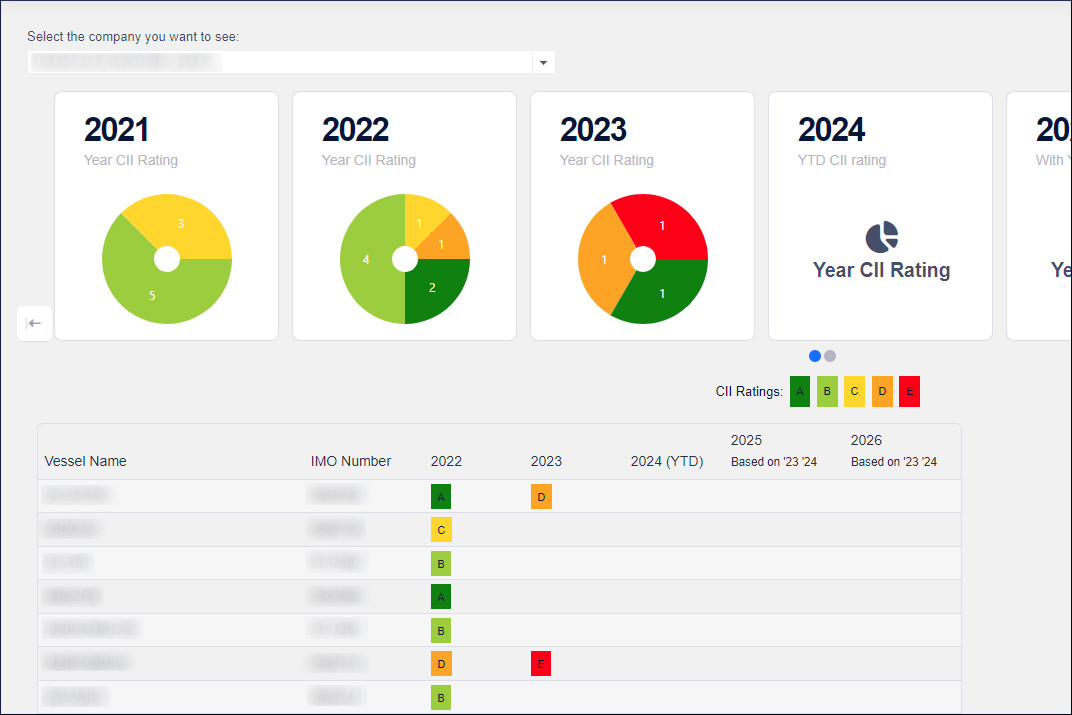
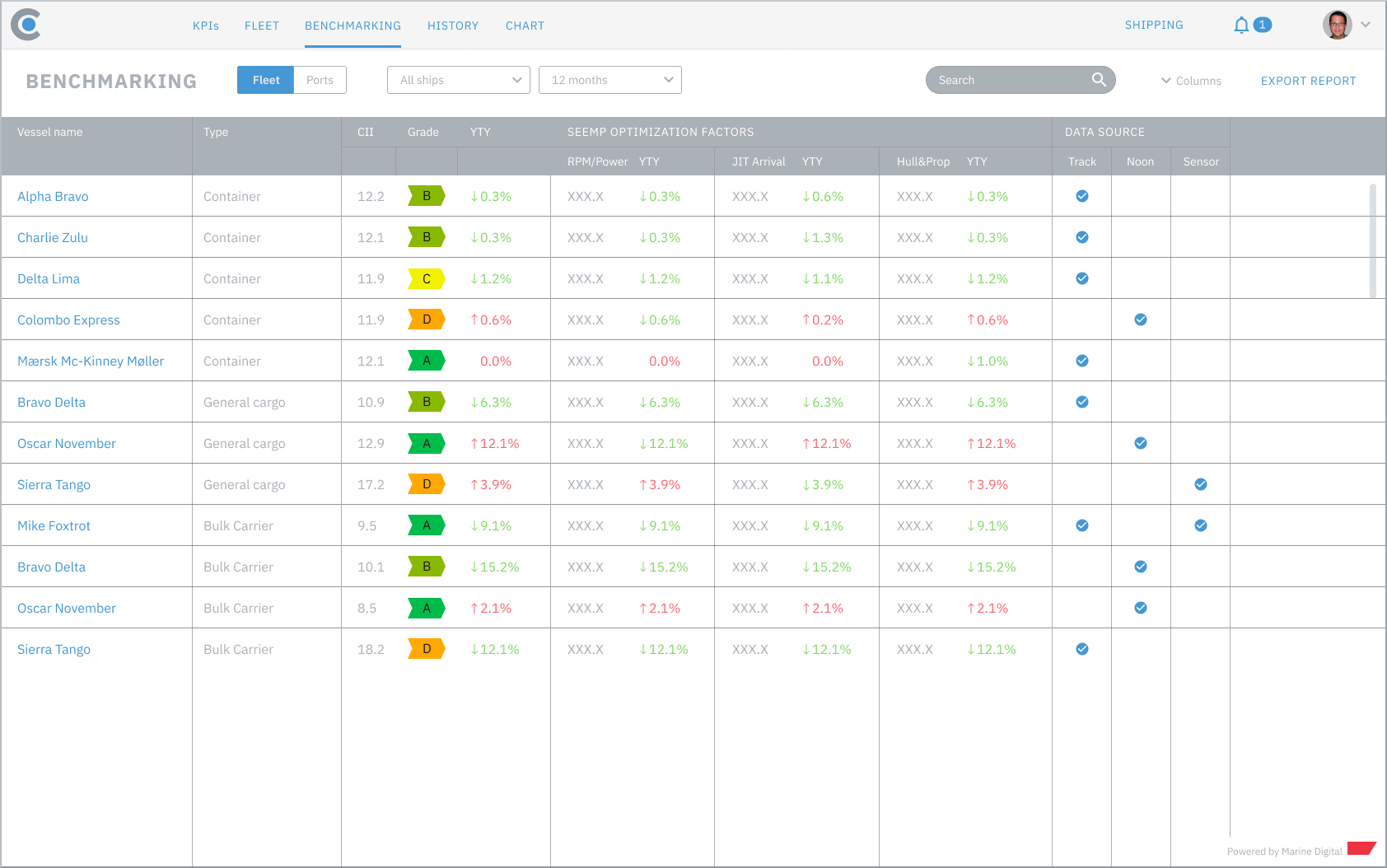
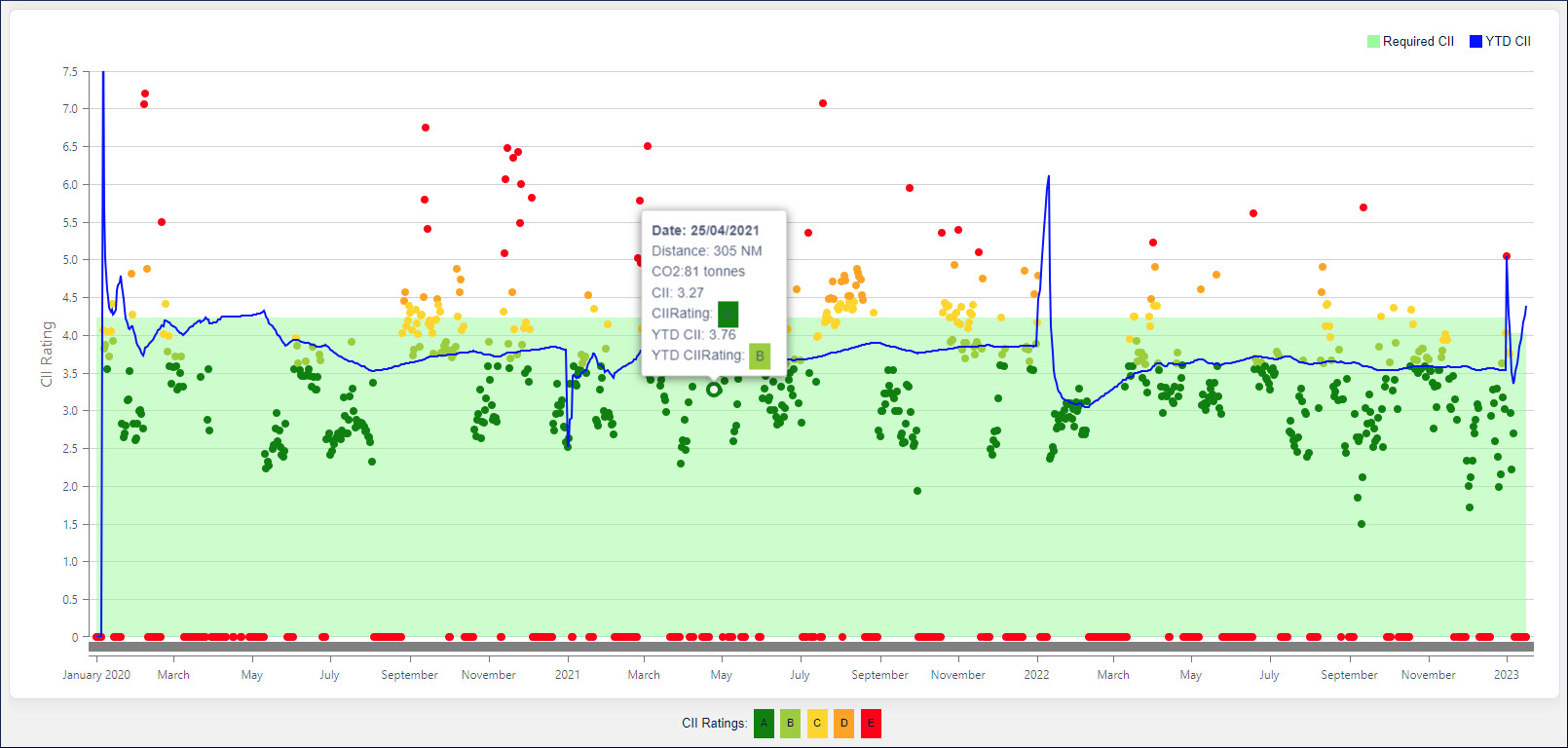
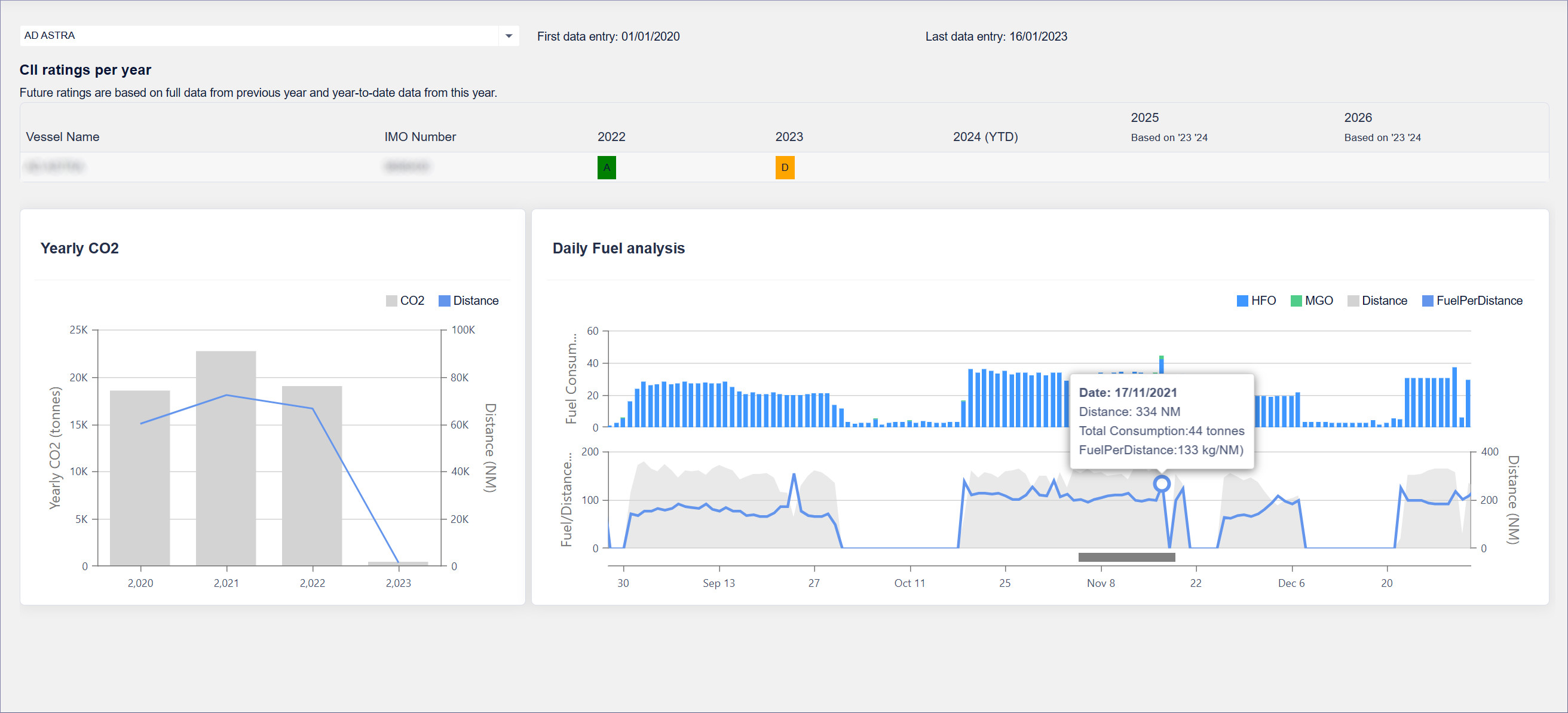
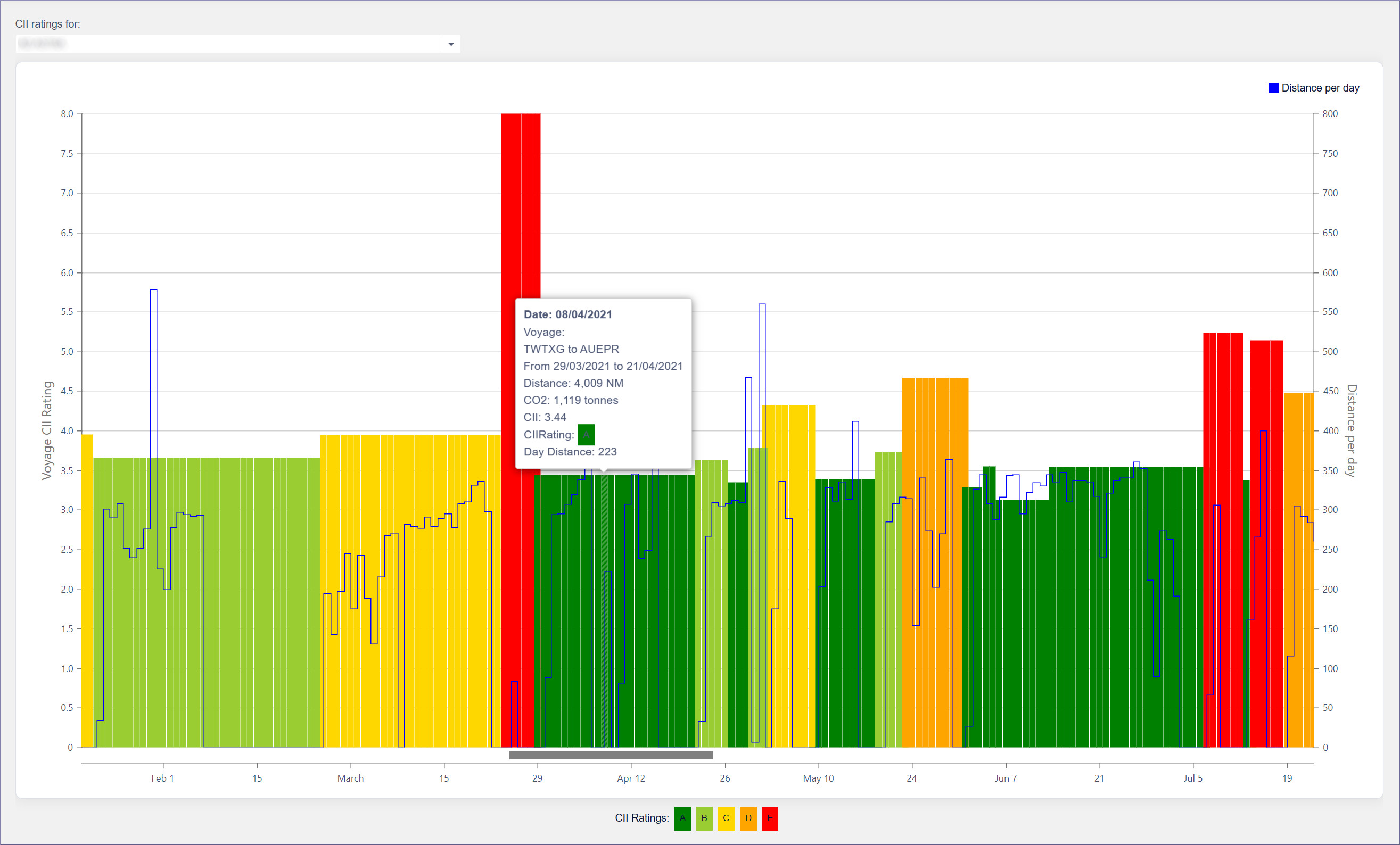
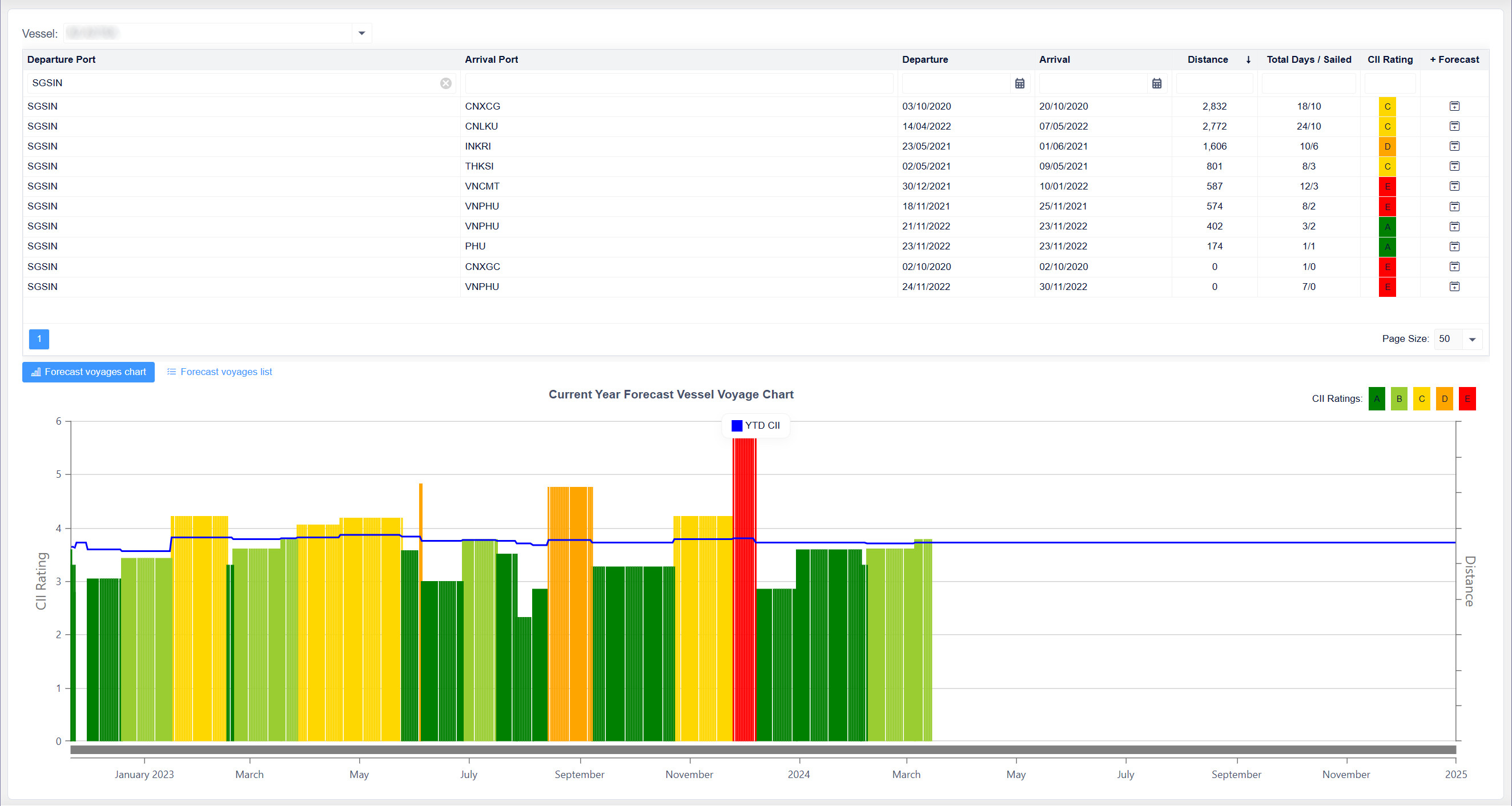

Noon Reporting
Our system allows for an extremely low impact on your operational process in terms of noon reporting. Import noon report files using manual upload, e-mail or API.
Under the hood, our system reads and translates your company noon reports into the format that we require for our service to work. No adjustments required from your side.
Contact our sales team for more information we can get your fleet CII compliant by 2030!